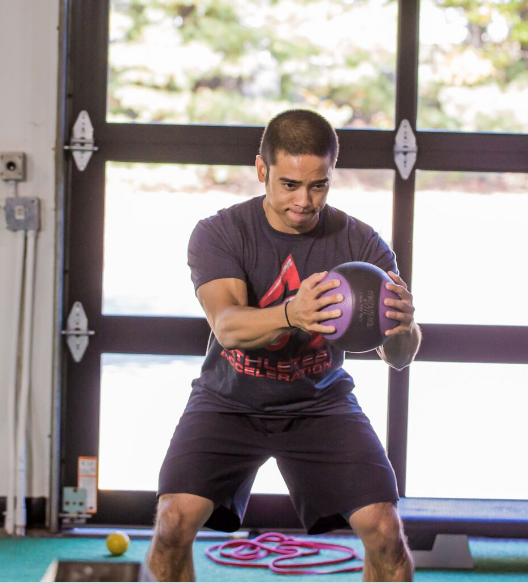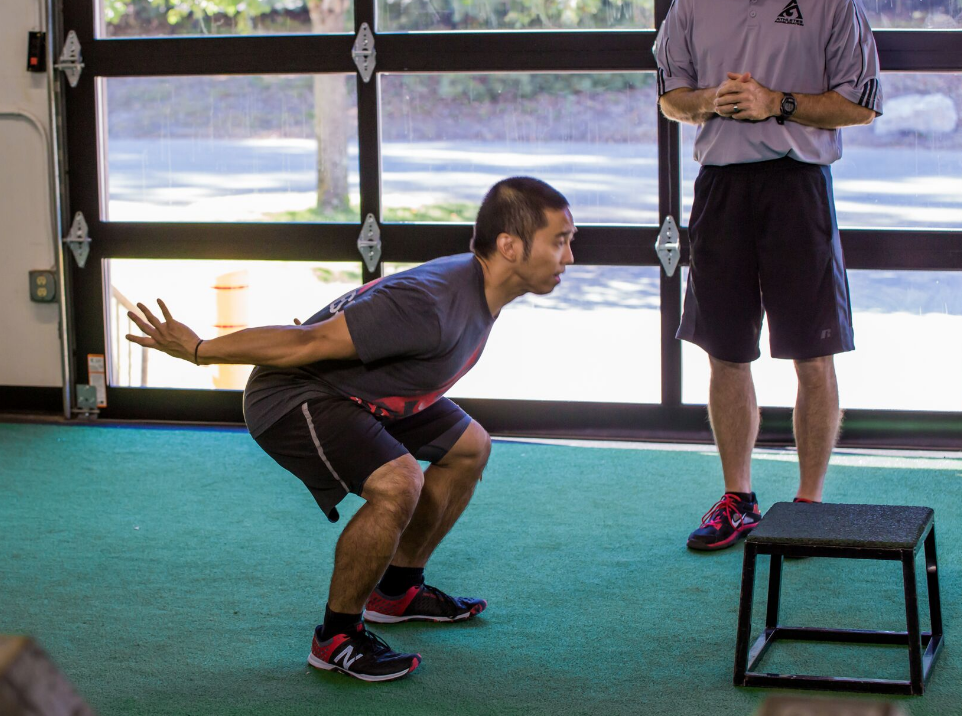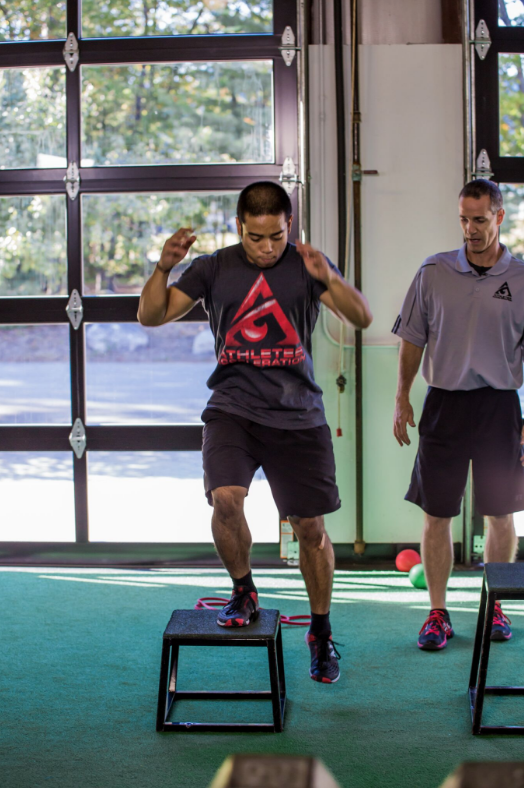Plyometric Power!
By: Patrick Beith

Plyometric training is an excellent supplement to your speed, strength and power training program. Plyometrics can greatly improve your power levels and help increase body control since they deal with moving your own bodyweight through hopping or bounding exercises, medicine ball throws, etc.
However, this type of training requires high levels of coordination, power, strength and balance. Athletes always want to do the most advanced, most technical movements that they see the professional athletes doing in their training. Because these exercises require so much power and coordination, there needs to be progression in the structure of plyometric training (like all other aspects of training). It may not be glorious and exciting, but in the short and long term, learning to evolve from basic to complex movements will always reap the greatest rewards. If we jump right into single leg bounds or depth jumps, without the proper progression, then we are putting our bodies at risk for avoidable injury.
In this week's Digest, we will go over some introductory level plyometrics focusing on stabilization and landing technique. By learning to perform these exercises correctly, athletes build a foundation for increasingly advanced movements requiring higher strength to body weight ratios.
Coaching cues:
With each repetition, be sure to get triple extension (full extension at the ankle, knee and hip). Cue the idea of trying to draw power from the ground by driving the heels into the ground and driving the hips forward with each jump.
Before landing, dorsiflex the feet by pulling the toes up toward the shin. Be sure to land flat footed. Athletes should not land heels first or land on the balls of their feet so that the heels are off the ground.
Practice landing softly. Absorb each landing with the muscles instead of joints and ligaments. This may mean dropping the hips into a half squat position upon landing. This will allow a soft landing (the feet shouldn't make a loud noise upon contact).
Reestablish balance before the next repetition. Athletes should not perform successive repetitions until their center of mass has been stabilized.
When introducing plyometric training to inexperienced athletes, keep the total number of ground contacts (the number of times the feet land on the ground) between 40 – 60. Gradually progress as technique becomes perfected.

Box Jumps:
Begin in a quarter to half squat position. Start off at low heights (12” – 24”) to establish proper form and technique. Jump up onto a box using two feet. Upon landing, if the hips drop lower than the original starting position, the box is likely too high for the athletes current ability. After each repetition, step down off the box.
Begin with 3-4 sets of 5 repetitions.
Linear Hurdle Hops:
This drill can be done with cones or mini hurdles. We begin by using 6” mini hurdles and allow athletes to ‘graduate' to the 12” hurdles once they accomplish triple extension, a soft landing, etc.
Line up 6 hurdles approximately 3-4 feet apart. Hop over each hurdle, focusing on all of the elements that were listed in the Coaching cues section. Make sure that athletes have their feet evenly aligned before each jump and that they are applying equal force with each leg. Many inexperienced athletes favor one leg and this can lead to muscle imbalances, compensation and injury.
Begin with 3-4 sets of 6 hurdles.
Lateral hurdle hops:
Lateral stability is important to develop when developing the power of the complete athlete.
Use the same set up at the Linear Hurdle Hops. The main difference is that the athletes will now be moving laterally. Focus on the same cues as before with extra emphasis being placed on equal force exertion between the left and right leg. Athletes performing this drill have a tendency to push off with one leg instead of using both equally. When performing this drill, make sure that athletes perform an equal number of repetitions moving to the left as moving to the right.
Begin with 2-3 sets of 6 hurdles in each direction.
Recommended Athletes' Acceleration
Products
—————————————————————————–





0 Comments for “Plyometric Power!”